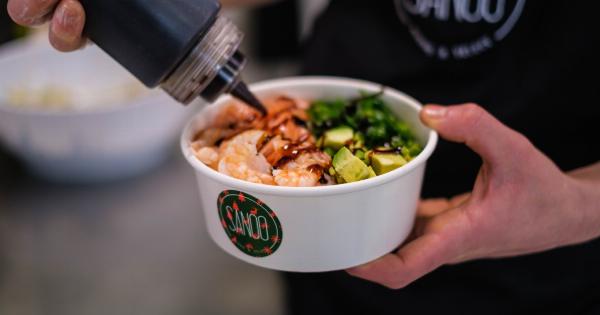Rice is a staple food that is consumed by billions of people around the world. It is a versatile grain that can be cooked in various ways and is a major source of nutrition for many families.
However, in recent years, concerns about rice safety have emerged, prompting many individuals to reevaluate their consumption habits. In this article, we will explore the male perspective on rice safety for families, discussing the benefits, concerns, and precautions associated with consuming rice.
Understanding the Nutritional Benefits of Rice
Rice is a highly nutritious grain that provides a rich source of carbohydrates, which serve as the body’s main source of energy.
It is also naturally gluten-free, making it an excellent choice for individuals with gluten sensitivities or celiac disease. Furthermore, rice contains essential vitamins and minerals, such as thiamine, niacin, iron, and magnesium, all of which are crucial for maintaining good health.
The Concerns Surrounding Rice Safety
Despite its nutritional benefits, concerns have been raised regarding rice safety. One major concern is the presence of arsenic in rice. Arsenic is a naturally occurring element that can be found in soil and water.
Rice plants are particularly efficient at absorbing arsenic from the environment, making rice more prone to contamination. High levels of arsenic consumption can be harmful to human health and may increase the risk of various health conditions, including cancer.
Why is the Male Perspective Important?
The male perspective on rice safety for families is crucial as men often play a significant role in making food-related decisions within the household.
By understanding the risks and benefits associated with consuming rice, men can make informed choices that prioritize the health and well-being of their families. It is essential to delve deeper into the topic, considering the different aspects to ensure a comprehensive understanding of rice safety.
Precautions and Safety Measures
To mitigate the potential risks associated with arsenic in rice, several precautions and safety measures can be taken:.
1. Diversify Your Grains
Instead of solely relying on rice as the main source of carbohydrates, consider incorporating other grains such as quinoa, millet, or buckwheat into your diet. This diversification helps reduce the overall arsenic exposure.
2. Choose the Right Type of Rice
Not all rice varieties are equally prone to arsenic contamination. Brown rice tends to contain higher levels of arsenic compared to white rice, as the outer bran layer of brown rice can absorb more arsenic.
Opting for basmati rice, jasmine rice, or sushi rice, which are known to have lower levels of arsenic, can be a safer choice for your family.
3. Rinse Your Rice Thoroughly
Prior to cooking, thoroughly rinsing rice with water can help remove excess starch and reduce arsenic levels. Rinse the rice until the water runs clear.
4. Cook Rice Using a Higher Water-to-Rice Ratio
Cooking rice with a higher water-to-rice ratio can aid in further reducing arsenic levels. Using a ratio of six cups of water for every one cup of rice and draining excess water after cooking can help minimize arsenic content.
5. Soaking Rice Before Cooking
Soaking rice for a few hours before cooking can help remove some of the arsenic. Discard the soaking water and rinse the rice thoroughly before cooking.
6. Consider Organic Rice
Organic rice is grown without the use of pesticides and synthetic fertilizers, which can reduce the chances of arsenic contamination. Opting for organic rice can be a safer option for your family.
7. Limit Rice Consumption
While rice can be a nutritious part of a balanced diet, it is important to consume it in moderation. Reducing overall rice consumption can help minimize exposure to arsenic.
8. Regularly Test Your Water
If you use well water or live in an area with a high likelihood of arsenic contamination, consider regularly testing your water for arsenic levels.
If high levels are detected, using alternative sources of water for cooking rice can help minimize exposure.
9. Pay Attention to Rice-Based Products
Apart from plain rice, many food products, such as rice milk, rice cakes, and rice-based snacks, are available in the market. It is essential to read labels and select products that prioritize low arsenic content.
10. Educate Your Family
Lastly, educating your family about the potential risks associated with rice consumption and the importance of taking precautions can foster a collective effort in ensuring rice safety for everyone.
Conclusion
Understanding rice safety from a male perspective is crucial for maintaining the health and well-being of families.
While rice offers numerous nutritional benefits, concerns regarding arsenic contamination have prompted the need for precautions and safety measures. By diversifying grains, choosing the right type of rice, rinsing thoroughly, and employing cooking techniques that reduce arsenic levels, men can ensure that their families continue to enjoy the benefits of rice while minimizing potential risks.































